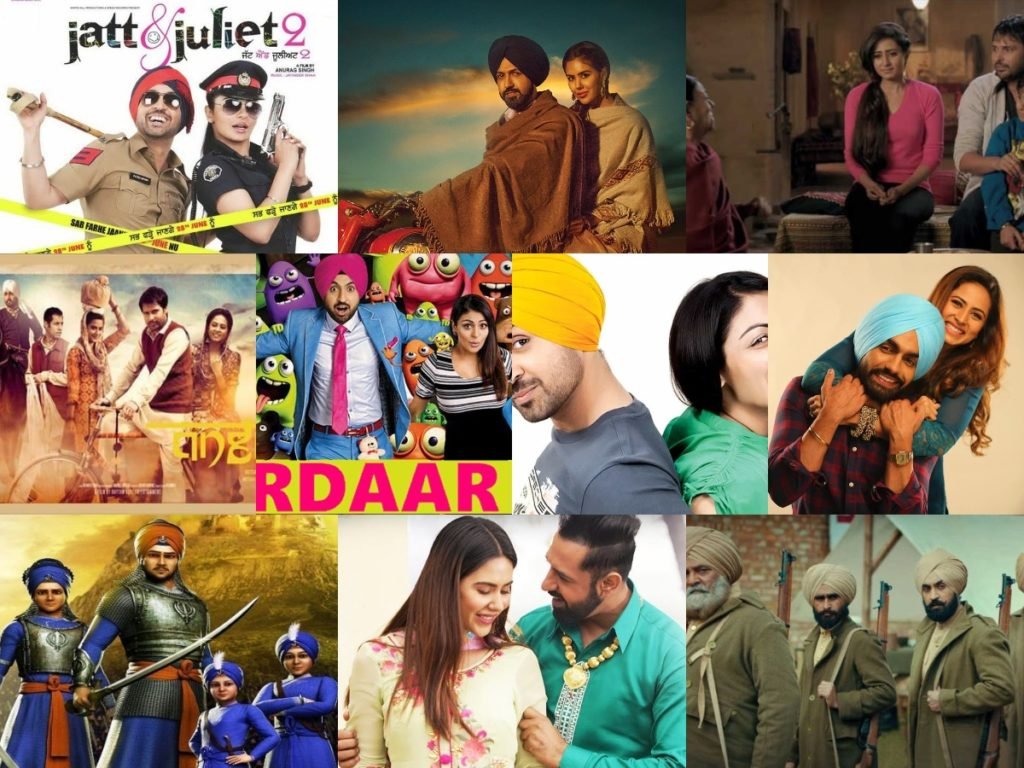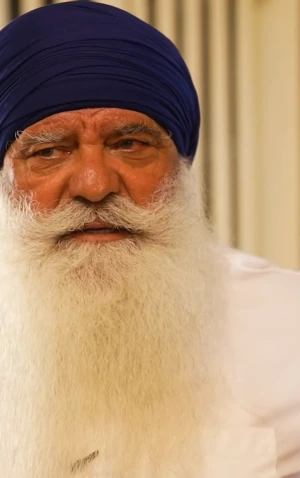
The Evolution of Punjabi Cinema

Introduction to Punjabi Cinema in the 1990s
In the early 1990s, Punjabi cinema was characterized by a modest but fervent industry, deeply rooted in the cultural and social fabric of Punjab. The films of this era often mirrored the agrarian lifestyle, familial values, and traditional narratives that resonated with the local audience. Popular genres included family dramas, romantic tales, and folklore-based stories, which catered to the sentiments and ethos of the Punjabi populace.
The 1990s saw the emergence and consolidation of key filmmakers who would go on to shape the trajectory of Punjabi cinema. Directors like Manmohan Singh and Ravinder Peepat were instrumental in defining the cinematic language of the time. Their works often delved into the themes of love, sacrifice, and social unity, which struck a chord with the audiences. The narrative style was predominantly linear, focusing on clear-cut moral distinctions and emotional storytelling.
Despite its rich cultural heritage, Punjabi cinema in the 1990s faced numerous challenges, including limited financial resources, competition from Bollywood, and a smaller target audience. The production values were modest, and the distribution networks restricted the reach of Punjabi films, often confining them to regional circuits. However, the passion and commitment of filmmakers and actors ensured that the industry continued to produce content that was both entertaining and reflective of Punjabi traditions and values.
Furthermore, actors like Gurdas Maan and Yograj Singh became household names, bringing charisma and authenticity to their roles. Their performances were pivotal in drawing audiences to the theaters and sustaining interest in Punjabi films. The music of Punjabi cinema also played a significant role, with songs often becoming more popular than the films themselves, contributing to the cultural tapestry of Punjab.
The 1990s thus set the foundational stage for Punjabi cinema, characterized by a blend of traditional storytelling and emerging cinematic techniques. This period was crucial in paving the way for the significant growth and evolution that the industry would experience in the following decades.
Key Films and Filmmakers of the 1990s
The 1990s marked a transformative period for Punjabi cinema, as it began carving out a distinctive identity amidst the dominant Bollywood industry. One of the most influential films of this era was “Jatt Jeona Morh” (1991), directed by Ravinder Ravi. This film resonated deeply with audiences due to its portrayal of rural Punjabi life and its strong cultural underpinnings. The success of “Jatt Jeona Morh” set a precedent for future filmmakers, emphasizing the importance of authentic storytelling rooted in Punjabi traditions.
Another cornerstone of the 1990s was the film “Naseebo” (1994), directed by Manmohan Singh. Singh’s directorial prowess brought an emotional depth to the narrative, and his work is often credited with elevating the technical standards of Punjabi cinema. The film’s commercial success demonstrated the potential of Punjabi films to attract a wide audience, encouraging more investment and interest in the industry.
In acting, Guggu Gill emerged as a pivotal figure during the 1990s. His portrayal of multifaceted characters in films like “Gabhroo Punjab Da” (1994) and “Badla Jatti Da” (1991) showcased his versatility and solidified his status as a leading actor. Gill’s performances were instrumental in drawing audiences to theaters, thereby boosting the overall popularity of Punjabi films.
Producers like Manjeet Maan also played a crucial role in this era. Her production house, Sai Productions, was responsible for several successful films, including “Laung Da Lishkara” (1986) and “Deson Pardes” (1992). Maan’s contributions were significant in providing a platform for creative storytelling and high-quality production values.
Overall, the 1990s was a decade of substantial growth for Punjabi cinema. The contributions of key filmmakers and actors not only expanded the industry’s reach but also laid a solid foundation for its future evolution. The films of this era remain influential, continuing to inspire contemporary filmmakers and resonate with audiences worldwide.
The Punjabi film industry in the 1990s grappled with numerous challenges that hindered its growth and development. One of the most significant obstacles was financial constraints. The limited availability of funding severely impacted the production quality and the ability to attract top talent. Filmmakers often struggled to secure investments, resulting in low-budget films that could not compete with the high production values of their Bollywood counterparts.
Another critical challenge was the intense competition from Bollywood. The Hindi film industry, with its vast resources and widespread appeal, overshadowed regional cinemas, including Punjabi cinema. Bollywood’s dominance in terms of star power, marketing reach, and distribution networks made it difficult for Punjabi films to gain significant traction. This competition not only limited the audience for Punjabi films but also siphoned off potential investments that might have otherwise been directed towards regional productions.
The lack of infrastructure further exacerbated the difficulties faced by Punjabi cinema. The region suffered from a shortage of state-of-the-art studios, sound stages, and post-production facilities, which are essential for producing high-quality films. This infrastructural deficit forced many filmmakers to either compromise on production quality or seek facilities outside the region, increasing costs and logistical complexities. Additionally, the scarcity of cinema halls and inadequate distribution channels restricted the reach of Punjabi films, limiting their commercial viability.
These challenges collectively stunted the growth of Punjabi cinema during the 1990s, making it difficult for the industry to keep pace with the evolving demands of the audience. The financial constraints, coupled with the overshadowing presence of Bollywood and the lack of essential infrastructure, created a challenging environment for filmmakers. Despite these hurdles, the resilience and passion of those involved in the Punjabi film industry laid the groundwork for future growth, setting the stage for significant advancements in the decades that followed.
The Turn of the Millennium: Transition and Transformation
The dawn of the new millennium marked a pivotal period of transition and transformation for Punjabi cinema. As the calendar turned to the year 2000, the industry witnessed significant changes that reshaped its landscape. One of the most notable drivers of this transformation was the advent of advanced technology. The introduction of digital filmmaking techniques revolutionized the production process, enabling filmmakers to experiment with new styles and methods. High-definition cameras, sophisticated editing software, and improved special effects technology collectively elevated the quality of Punjabi films.
Alongside technological advancements, there was a marked shift in audience preferences. The turn of the millennium saw Punjabi viewers becoming more discerning and demanding higher standards in storytelling, cinematography, and overall production values. This shift pushed filmmakers to raise the bar, resulting in a surge of innovative and diverse narratives that resonated with a broader audience. The focus moved from traditional themes to more contemporary and relatable stories, reflecting the evolving socio-cultural landscape of Punjab.
Increased investment in Punjabi films played a crucial role in this period of transformation. With a growing interest in regional cinema, both local and international investors began to recognize the potential of Punjabi cinema. This influx of capital facilitated the production of higher-budget films, allowing for more ambitious projects that could compete on a larger scale. Enhanced funding also led to better marketing and distribution strategies, ensuring that Punjabi films reached wider audiences, not only within India but also among the global Punjabi diaspora.
Moreover, the period around the early 2000s saw the emergence of new talent, both in front of and behind the camera. Fresh faces brought a renewed energy to the industry, while visionary directors and producers challenged the status quo and introduced innovative storytelling techniques. This blend of seasoned professionals and new entrants fostered a dynamic and creative environment, further propelling the growth and evolution of Punjabi cinema.
Emergence of New Talent and Modern Filmmaking Techniques
The early 2000s marked a significant period of transformation for Punjabi cinema, characterized by the emergence of new talent and the adoption of modern filmmaking techniques. This era witnessed the rise of a fresh wave of filmmakers who brought innovative ideas and storytelling methods to the forefront. Directors like Manmohan Singh, Anurag Singh, and Navaniat Singh, among others, introduced a new narrative style that resonated with contemporary audiences. Their creative vision and technical prowess played a crucial role in revitalizing the industry.
Simultaneously, a new generation of actors began to make their mark on Punjabi cinema. Artists such as Jimmy Sheirgill, Neeru Bajwa, and Diljit Dosanjh emerged as prominent figures, bringing a blend of charisma, talent, and versatility to their roles. Their performances not only captivated audiences but also set higher standards for acting within the industry. This surge of new talent helped bridge the gap between traditional and modern cinematic expressions, thereby broadening the scope and appeal of Punjabi films.
The adoption of modern filmmaking techniques was another pivotal development during this period. The transition from analog to digital technology revolutionized the way films were made and consumed. High-definition cameras, advanced editing software, and digital sound recording significantly enhanced the production quality of Punjabi movies. This technological shift enabled filmmakers to experiment with new visual styles, special effects, and more sophisticated narratives. Consequently, the overall cinematic experience for viewers was greatly enhanced.
Moreover, the influence of global cinema began to permeate Punjabi filmmaking, encouraging directors to explore diverse genres and themes. The integration of contemporary issues, cross-cultural narratives, and innovative storytelling methods reflected a more globalized and modern approach. This period also saw an increase in collaboration with international artists and technicians, further enriching the creative and technical landscape of Punjabi cinema.
In essence, the early 2000s were a time of dynamic growth and evolution for Punjabi cinema. The emergence of new talent and the incorporation of modern filmmaking techniques played a crucial role in shaping the industry’s future, paving the way for a more vibrant and diverse cinematic journey.
Box Office Hits and Critical Acclaims (2000-2010)
The decade from 2000 to 2010 marked a significant turning point for Punjabi cinema, characterized by a series of box office hits and critically acclaimed films that played a pivotal role in the industry’s growth. Among the standout successes of this period was the 2002 film Jatt & Juliet, which not only broke box office records but also set a new standard for romantic comedies in Punjabi cinema. The film’s success was attributed to its relatable storyline, strong performances, and the chemistry between its lead actors, which resonated with audiences both in India and abroad.
Another notable film was Mel Karade Rabba (2010), a romantic drama that garnered both commercial success and critical acclaim. The film’s narrative, centered around themes of love and societal expectations, struck a chord with viewers and showcased the evolving storytelling capabilities of Punjabi filmmakers. Its success underscored the growing appetite for varied genres within Punjabi cinema, moving beyond traditional plots and embracing contemporary issues.
Carry On Jatta (2012), although slightly outside the specified timeframe, deserves an honorary mention for its impact. This comedy film, filled with humorous twists and turns, became a massive hit and further showcased the versatility of Punjabi cinema in catering to different tastes. Its success highlighted the industry’s ability to produce quality entertainment that appealed to a global audience, thereby expanding the reach of Punjabi films.
The period also saw critically acclaimed films like Punjab 1984 and Shaheed-E-Mohabbat Boota Singh (1999), which, though released just before the decade in question, left a lasting impact. These films, based on historical and social issues, were instrumental in bringing Punjabi cinema to the forefront of serious filmmaking, earning accolades at various film festivals and attracting a discerning audience.
The box office successes and critical acclaims from 2000 to 2010 not only amplified the visibility of Punjabi cinema but also demonstrated its potential to produce high-quality films that could compete on an international stage. This era laid the foundation for future growth, inspiring filmmakers to explore new ideas and genres, thereby enriching the cinematic landscape of Punjab.
The Role of Music in Punjabi Cinema
Music has always held a pivotal role in Punjabi cinema, significantly contributing to its evolution from 1990 to 2010. Over these two decades, the film industry witnessed a remarkable transformation in its musical landscape, with substantial contributions from celebrated music directors, singers, and lyricists.
In the early 1990s, Punjabi cinema predominantly featured traditional folk music, deeply rooted in the cultural heritage of Punjab. Music directors like Charanjit Ahuja and Surinder Shinda played an instrumental role in preserving and promoting this traditional sound. The era was marked by soulful renditions from legendary singers such as Gurdas Maan and Surinder Kaur, whose voices resonated with the essence of Punjab’s rustic charm.
As the industry progressed into the late 1990s and early 2000s, there was a visible shift towards a fusion of traditional and contemporary music styles. This period saw the rise of music directors like Jaidev Kumar and Babloo Kumar, who adeptly blended folk melodies with modern beats, creating a unique sound that appealed to a broader audience. The contributions of lyricists like Babu Singh Maan and Dev Tharikewala were also significant, as their poetic expressions perfectly complemented the evolving musical styles.
The integration of contemporary music styles further enhanced the popularity of Punjabi cinema. The late 2000s witnessed the emergence of a new wave of music directors and singers, including the likes of Honey Singh and Diljit Dosanjh, who introduced a fresh, vibrant energy to the industry. Their innovative approach to music, characterized by catchy tunes and rhythmic beats, resonated with the younger generation and played a crucial role in expanding the reach of Punjabi films beyond regional boundaries.
Overall, the evolution of music in Punjabi cinema from 1990 to 2010 reflects a harmonious blend of tradition and modernity. This dynamic interplay of musical elements not only enriched the cinematic experience but also contributed significantly to the growth and popularity of Punjabi films.
Conclusion: The Legacy and Future of Punjabi Cinema
The period from 1990 to 2010 marked a transformative era for Punjabi cinema, characterized by significant growth and evolution. This two-decade span saw Punjabi films transition from a niche segment to a more mainstream and globally recognized industry. The infusion of fresh storytelling techniques, advanced production technologies, and a renewed focus on cultural narratives played pivotal roles in this transformation. Filmmakers began to experiment with diverse genres, moving beyond traditional themes to explore contemporary issues, thereby broadening the appeal of Punjabi cinema.
The legacy of this period is profound, establishing a strong foundation for the industry. The contributions of visionary directors, talented actors, and dedicated production teams have left an indelible mark, paving the way for future generations. This era also witnessed a surge in the popularity of Punjabi music, which became an integral part of the cinematic experience, further enhancing the cultural resonance of the films.
Looking ahead, the future of Punjabi cinema appears promising, with ample opportunities for continued innovation and growth. The industry must remain committed to nurturing new talent and embracing cutting-edge technologies to produce high-quality content. Additionally, there is a need for sustained support from both government and private sectors to ensure the financial viability and global competitiveness of Punjabi films.
As Punjabi cinema continues to evolve, it is essential to maintain a balance between preserving cultural heritage and embracing modernity. By doing so, it can continue to captivate audiences worldwide, further solidifying its place in the global cinematic landscape. The journey from 1990 to 2010 has set a remarkable precedent, and with ongoing dedication and creativity, the future of Punjabi cinema holds limitless potential.







